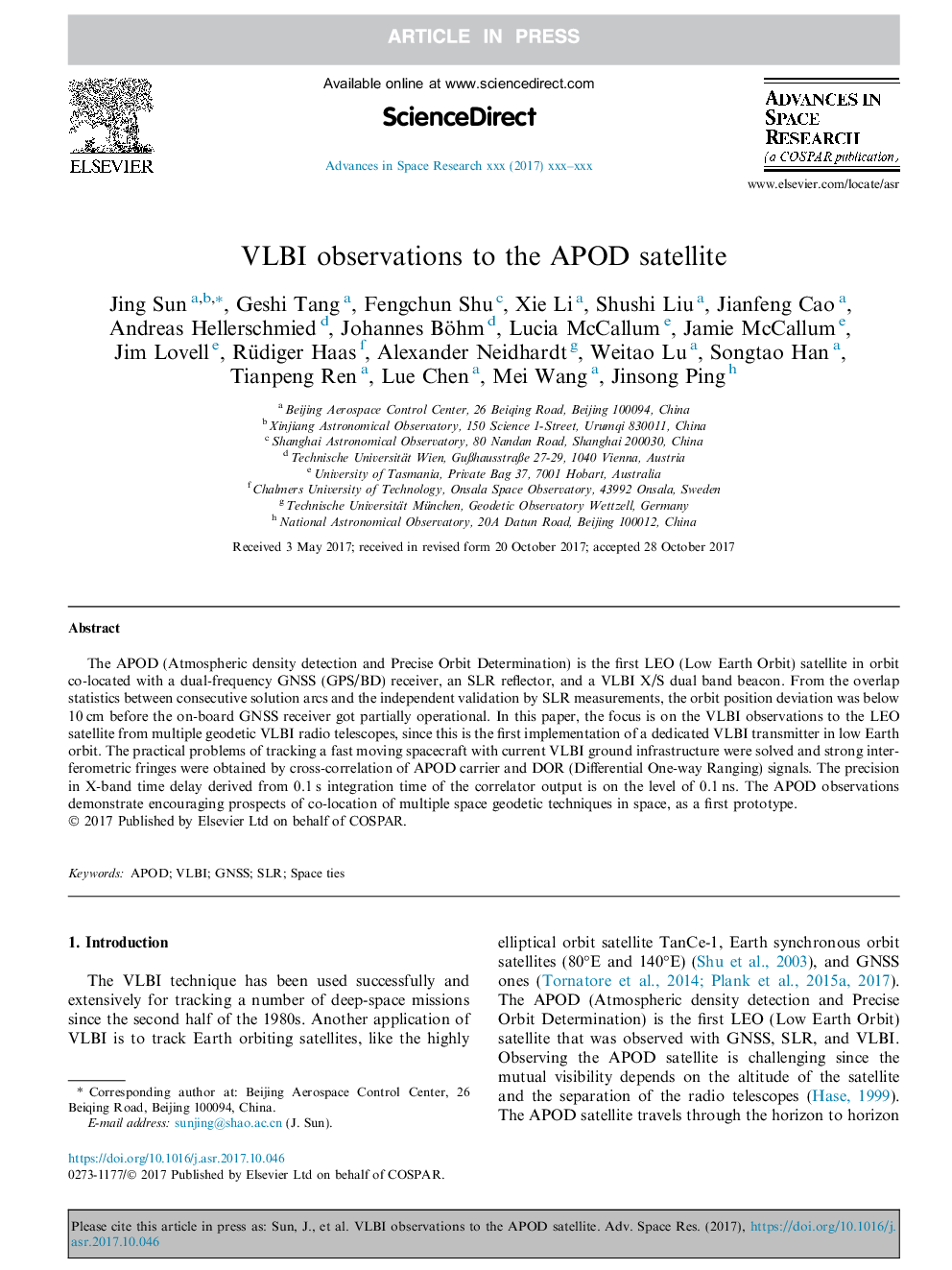| Article ID | Journal | Published Year | Pages | File Type |
|---|---|---|---|---|
| 8132267 | Advances in Space Research | 2018 | 7 Pages |
Abstract
The APOD (Atmospheric density detection and Precise Orbit Determination) is the first LEO (Low Earth Orbit) satellite in orbit co-located with a dual-frequency GNSS (GPS/BD) receiver, an SLR reflector, and a VLBI X/S dual band beacon. From the overlap statistics between consecutive solution arcs and the independent validation by SLR measurements, the orbit position deviation was below 10â¯cm before the on-board GNSS receiver got partially operational. In this paper, the focus is on the VLBI observations to the LEO satellite from multiple geodetic VLBI radio telescopes, since this is the first implementation of a dedicated VLBI transmitter in low Earth orbit. The practical problems of tracking a fast moving spacecraft with current VLBI ground infrastructure were solved and strong interferometric fringes were obtained by cross-correlation of APOD carrier and DOR (Differential One-way Ranging) signals. The precision in X-band time delay derived from 0.1â¯s integration time of the correlator output is on the level of 0.1â¯ns. The APOD observations demonstrate encouraging prospects of co-location of multiple space geodetic techniques in space, as a first prototype.
Related Topics
Physical Sciences and Engineering
Earth and Planetary Sciences
Space and Planetary Science
Authors
Jing Sun, Geshi Tang, Fengchun Shu, Xie Li, Shushi Liu, Jianfeng Cao, Andreas Hellerschmied, Johannes Böhm, Lucia McCallum, Jamie McCallum, Jim Lovell, Rüdiger Haas, Alexander Neidhardt, Weitao Lu, Songtao Han, Tianpeng Ren, Lue Chen, Mei Wang,
